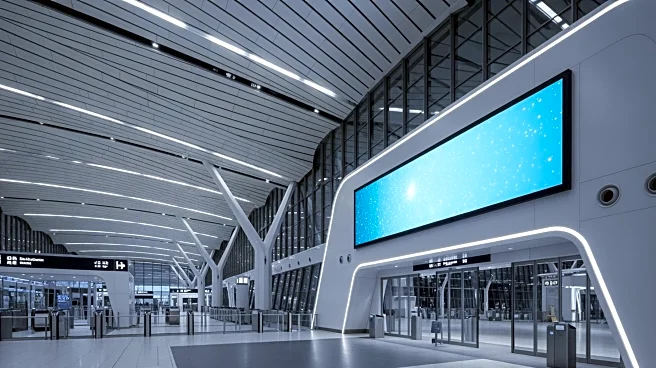What's Happening?
Veronika Andrianovaite, CEO of Nordic Dino, has highlighted the benefits of robotic aircraft cleaning as a preventive measure against ice adhesion during winter. Regular washing of aircraft exteriors can create surfaces that resist ice formation, reducing
the need for aggressive de-icing procedures. Contaminants on aircraft surfaces increase ice adhesion by creating rough, porous surfaces. By maintaining clean exteriors, airlines can minimize de-icing costs, chemical waste, and improve operational efficiency during winter.
Why It's Important?
The aviation industry faces significant challenges during winter, with de-icing being a critical safety procedure. By adopting robotic cleaning solutions, airlines can reduce the frequency and intensity of de-icing operations, leading to cost savings and environmental benefits. Efficient de-icing processes can also improve on-time performance, enhancing passenger experience during harsh winter conditions. This proactive approach aligns with industry efforts to optimize operations and reduce environmental impact.
What's Next?
Airlines may increasingly adopt robotic cleaning technologies to maintain aircraft cleanliness and reduce de-icing needs. This could involve scheduling regular washing sessions ahead of winter to establish a clean baseline. As the industry seeks to improve winter reliability, the adoption of such technologies may become more widespread, potentially influencing industry standards and practices.
Beyond the Headlines
The use of robotic cleaning solutions in aviation highlights the growing role of automation in enhancing operational efficiency and safety. This trend reflects broader industry shifts towards technology-driven solutions to address environmental and economic challenges, paving the way for more sustainable practices in aviation.














